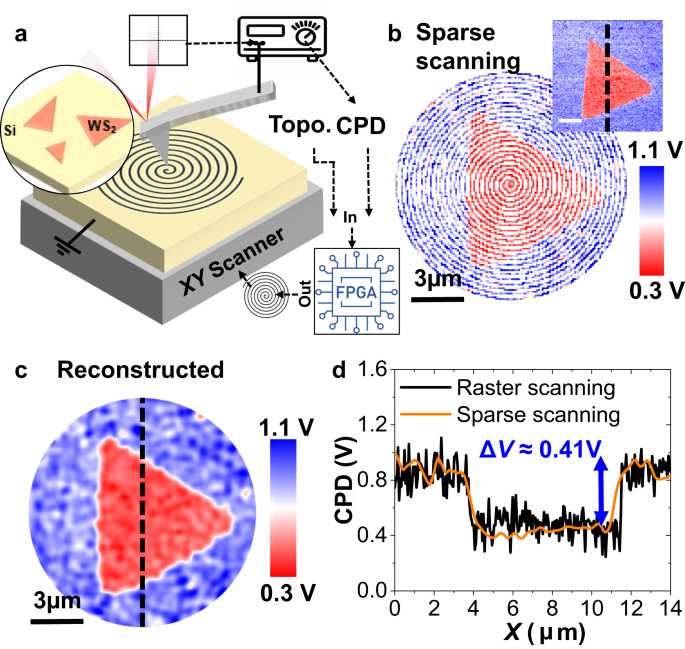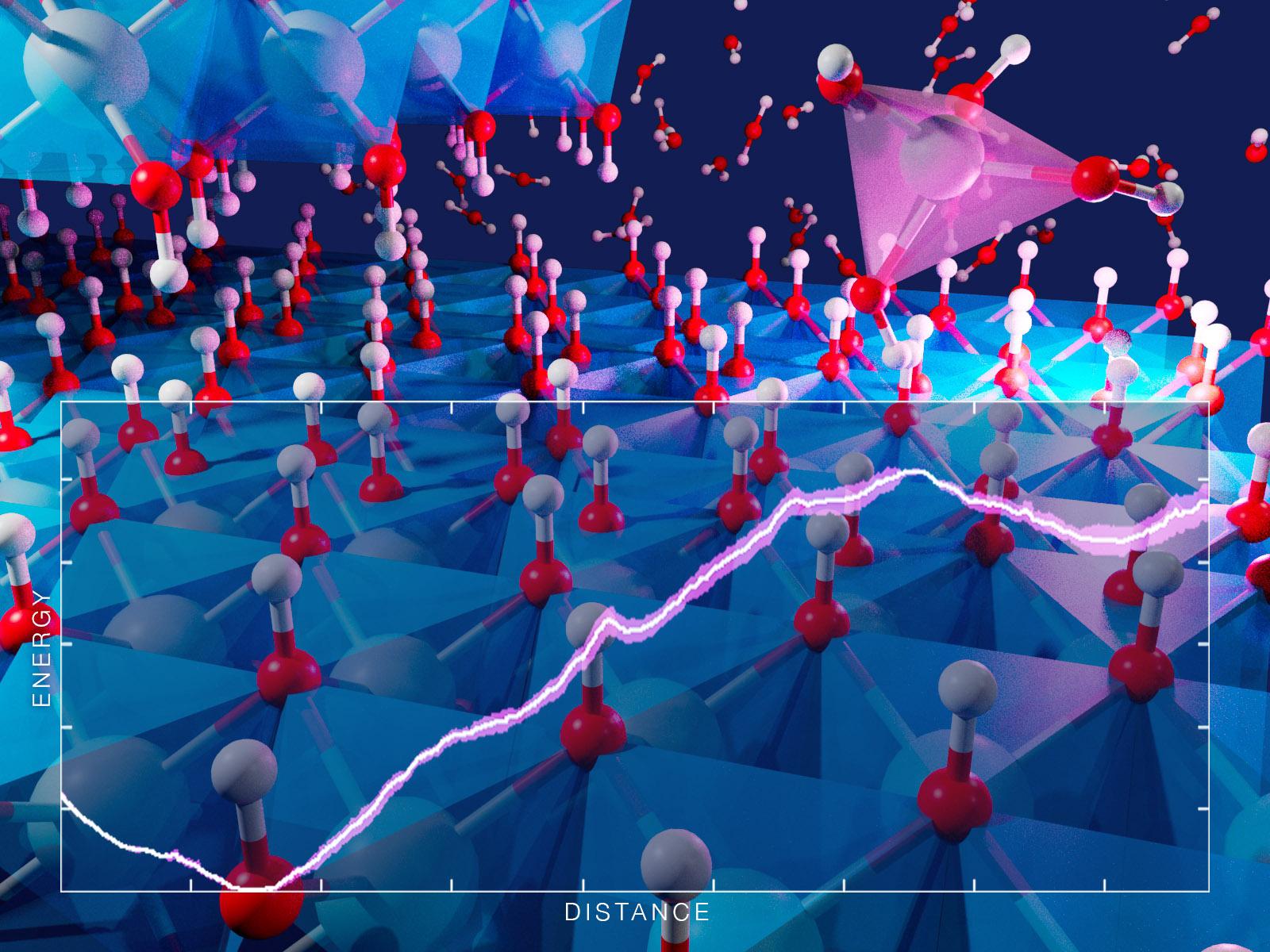2024-02-06 オークリッジ国立研究所(ORNL)
◆彼らの手法は、ナノメートルレベル(10億分の1メートル)での電荷の動きを視覚化し、従来の方法よりも数千倍速いスピードで行うことを可能にしました。チームは、スキャニングプローブ顕微鏡と高度なコンピュータビジョン技術を組み合わせて、効率的なスパイラルパターンを実現し、プロセスの迅速で徹底的な観察を可能にしました。これにより、従来不可能だったプロセスの詳細な観察が可能になりました。
<関連情報>
- https://www.ornl.gov/news/deciphering-dynamics-electric-charge
- https://www.nature.com/articles/s41467-023-42583-x
スパース走査型ケルビンプローブ力顕微鏡を用いた表面電荷ダイナミクスの高速マッピング High-speed mapping of surface charge dynamics using sparse scanning Kelvin probe force microscopy
Marti Checa,Addis S. Fuhr,Changhyo Sun,Rama Vasudevan,Maxim Ziatdinov,Ilia Ivanov,Seok Joon Yun,Kai Xiao,Alp Sehirlioglu,Yunseok Kim,Pankaj Sharma,Kyle P. Kelley,Neus Domingo,Stephen Jesse & Liam Collins
Nature Communications Published:08 November 2023
DOI:https://doi.org/10.1038/s41467-023-42583-x

Abstract
Unraveling local dynamic charge processes is vital for progress in diverse fields, from microelectronics to energy storage. This relies on the ability to map charge carrier motion across multiple length- and timescales and understanding how these processes interact with the inherent material heterogeneities. Towards addressing this challenge, we introduce high-speed sparse scanning Kelvin probe force microscopy, which combines sparse scanning and image reconstruction. This approach is shown to enable sub-second imaging (>3 frames per second) of nanoscale charge dynamics, representing several orders of magnitude improvement over traditional Kelvin probe force microscopy imaging rates. Bridging this improved spatiotemporal resolution with macroscale device measurements, we successfully visualize electrochemically mediated diffusion of mobile surface ions on a LaAlO3/SrTiO3 planar device. Such processes are known to impact band-alignment and charge-transfer dynamics at these heterointerfaces. Furthermore, we monitor the diffusion of oxygen vacancies at the single grain level in polycrystalline TiO2. Through temperature-dependent measurements, we identify a charge diffusion activation energy of 0.18 eV, in good agreement with previously reported values and confirmed by DFT calculations. Together, these findings highlight the effectiveness and versatility of our method in understanding ionic charge carrier motion in microelectronics or nanoscale material systems.



